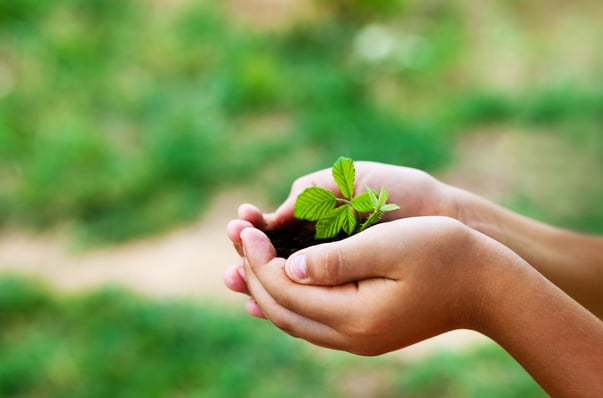
Earlier this year, we discussed how we are seeing more and more business leaders prioritizing sustainability as a key facet of their mission and building it into their principles and strategies to ensure business resilience. But corporations aren’t the only ones shifting toward more sustainable practices. Individuals are also increasingly reflecting on their carbon footprints and finding ways to lead more sustainable lives. If you are looking for tangible ways to have a more positive impact on the planet in your daily life, check out these six tips—Reflect. Reorganize. Repurpose. Recycle. Reinforce …and Repeat!
Current habits are a good way to start. Reflecting on your daily routine will bring attention to excesses, volume of waste, the materials of products used, and other areas of day-to-day living that require improvement. These changes could take a while because time and patience are necessary to make observations and track behaviors effectively. Be aware that while the focus of this piece is on tangible objects, it might also be a good time to think about intangibles such as time, effort, and power. Inefficiency could lead to longer hours spent charging a laptop, running the dishwasher more often than necessary versus using the same bowl for multiple meals/glass for multiple drinks, and so forth.
Once the areas of improvement are noted, the next step is reorganization. Start this process by removing anything that is costly to produce and consider upcycling certain items. You could undertake restructuring your daily practices with the excitement of a new project, although some may find this daunting. Note that habits are born from commitment. For those who prefer to go slowly, start by changing one thing per day and stick to that for a few weeks, then proceed to introduce a new modification to the routine. To aid this process, it is important to inspect homes, office spaces, routines, and processes.
When rearrangement exposes both tangible and intangible items that may no longer serve a purpose, it is time to move onto the next phase. While the first instinct might be to throw “stuff” out, you should pause and take time to evaluate each item and consider how to repurpose it. For instance, if storage is a requirement after reorganization, instead of throwing out a plastic bottle, cut off the top/side and use the rest of it to store some pens and other odds and ends. Rummaging through items will reveal the opportunity to creatively upcycle some of them by giving them a new use. There are several other ways to breathe new life into items. Two key ideas are swapping and donating. Friends, family, and hobby groups are the easiest way to swap out things in good condition but no longer needed. Swapping them fills a gap the other party has and reduces the environmental impact of purchasing a new product. Consider donating to organizations that are resourced to locate and take care of people’s needs.
Of course, not everything can be reused. In such cases, it is important to be aware of your city’s/country’s laws on recycling and then act accordingly. When in doubt about what to recycle and how, it is best to ask questions. Getting information from a trusted source, family, friends, or even colleagues will serve to reinforce the mission of producing low waste, upcycling, and managing waste.
Repeat this process as often as is feasible—conduct a monthly, quarterly, or yearly waste audit if necessary. Connect with groups with similar interests to keep the conversation going! APEXA’s mission to digitize the Life Insurance Industry is designed to reduce paper waste caused by the paper-heavy contracting processes of the industry. For information on how the system can assist an Advisor, MGA, and Insurer looking for ways to decimate paper waste, contact us now.





